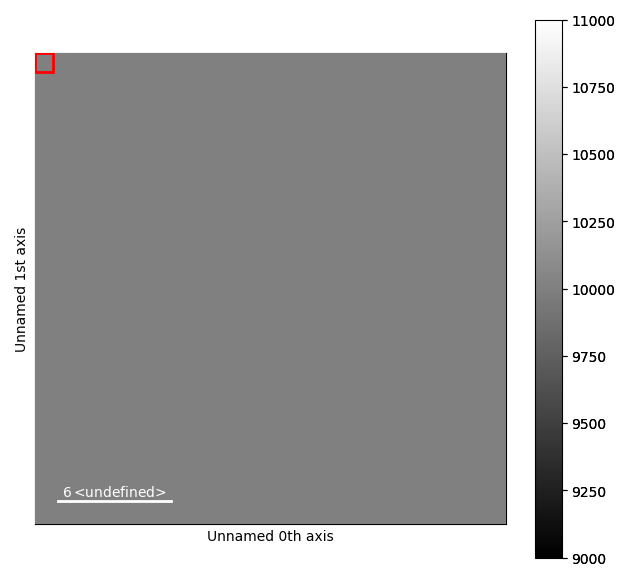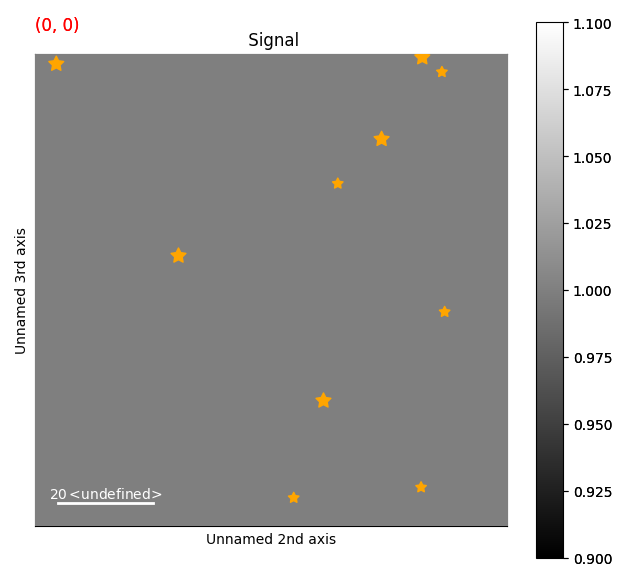Note
Go to the end to download the full example code.
Star Markers#
Create a signal
import hyperspy.api as hs
import matplotlib as mpl
import numpy as np
# Create a Signal2D with 2 navigation dimensions
rng = np.random.default_rng(0)
data = np.ones((25, 25, 100, 100))
s = hs.signals.Signal2D(data)
This first example shows how to draw static stars markers using the matplotlib StarPolygonCollection
# Define the position of the boxes
offsets = rng.random((10, 2)) * 100
# every other star has a size of 50/100
m = hs.plot.markers.Markers(collection=mpl.collections.StarPolygonCollection,
offsets=offsets,
numsides=5,
color="orange",
sizes=(50, 100))
s.plot()
s.add_marker(m)
Dynamic Star Markers#
This second example shows how to draw dynamic stars markers, whose position depends on the navigation coordinates
# Create a Signal2D with 2 navigation dimensions
s2 = hs.signals.Signal2D(data)
# Create a ragged array of offsets
offsets = np.empty(s.axes_manager.navigation_shape, dtype=object)
for ind in np.ndindex(offsets.shape):
offsets[ind] = rng.random((10, 2)) * 100
m2 = hs.plot.markers.Markers(collection=mpl.collections.StarPolygonCollection,
offsets=offsets,
numsides=5,
color="blue",
sizes=(50, 100))
s2.plot()
s2.add_marker(m2)
sphinx_gallery_thumbnail_number = 2
Total running time of the script: (0 minutes 1.730 seconds)




